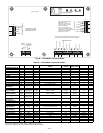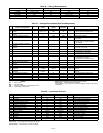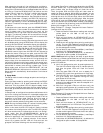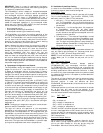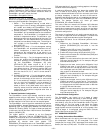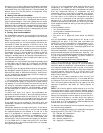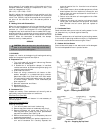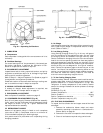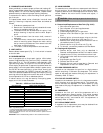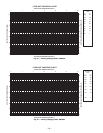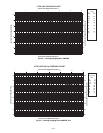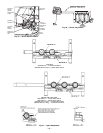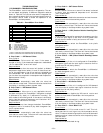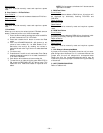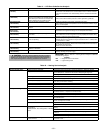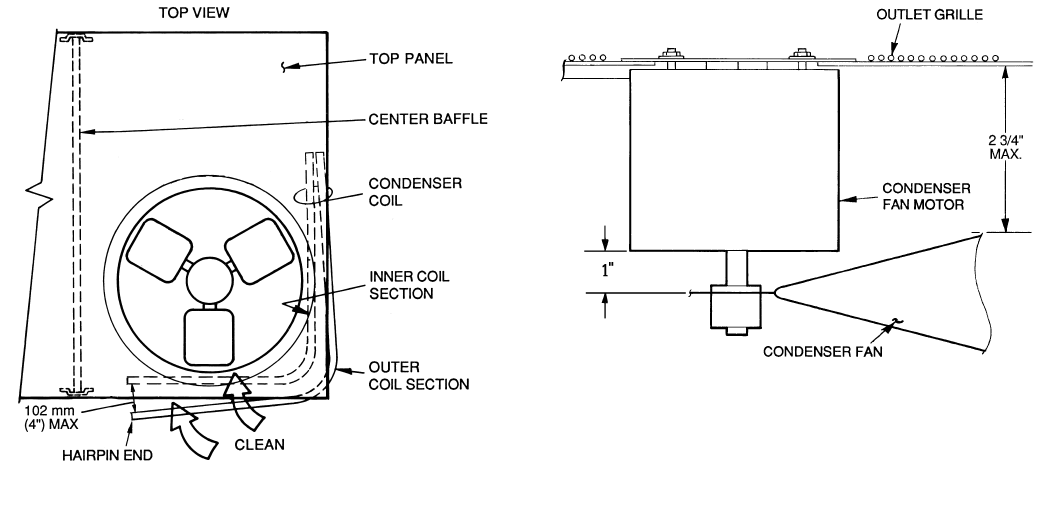
—48—
II. LUBRICATION
A. Compressors
Each compressor is charged with the correct amount of oil at
the factory.
B. Fan Motor Bearings
Fan motor bearings are of the permanently lubricated type.
No further lubrication is required. No lubrication of con-
denser or evaporator fan motors is required.
III. BLOWER BELT ADJUSTMENT
Inspect blower belt for wear, proper belt tension, and pulley
alignment as conditions require or at the beginning of each
heating and air conditioning season.
Refer to Step 9 — Adjust Evaporator-Fan Speed on page 24
for adjustment and alignment procedures.
Check belt tension at least once each heating or cooling sea-
son or as conditions require. Adjust as required.
IV. MANUAL OUTDOOR-AIR DAMPER
If outdoor-air damper blade adjustment is required, see
Manual Outdoor-Air Damper section on page 14.
V. ECONOMI$ER+ ADJUSTMENT
Refer to Optional EconoMi$er+ section on page 15.
VI. CONDENSER-FAN ADJUSTMENT (Fig. 40)
Shut off unit power supply. Remove condenser-fan assembly
(grille, motor, and fan) and loosen fan hub setscrews. Adjust
fan height as shown in Fig. 40. Tighten setscrews and
replace condenser-fan assembly.
VII. REFRIGERANT CHARGE
Amount of refrigerant charge is listed on unit nameplate
(also refer to Table 1). Compressor must run a minimum of
10 minutes before adjusting or checking charge.
Unit panels must be in place when unit is operating during
charging procedure.
A. No Charge
Use standard evacuating techniques. After evacuating sys-
tem, to 500 microns, weigh in the specified amount of refrig-
erant. (Refer to Table 1.)
B. Low-Charge Cooling
Using Cooling Charging Charts, Fig. 41-44, vary refrigerant
until the conditions of the appropriate chart are met. Note
the charging charts are different from type normally used.
Charts are based on charging the units to the correct super-
heat for the various operating conditions. Accurate pressure
gage and temperature sensing device are required. Do not
use pocket type thermometers for measuring surface temper-
atures as they are not designed for this type of measure-
ment. Connect the pressure gage to the service port on the
suction line. Mount the temperature sensing device on the
suction line and insulate it so that outdoor ambient tempera-
ture does not affect the reading. Indoor-air cfm must be
within the normal operating range of the unit.
C. To Use Cooling Charging Chart
Take the outdoor ambient temperature and read the suction
pressure gage. Refer to chart to determine what suction tem-
perature should be. If suction temperature is high, add
refrigerant. If suction temperature is low, carefully recover
some of the charge. Recheck the suction pressure as charge
is adjusted.
EXAMPLE: (Fig. 43)
Outdoor Temperature . . . . . . . . . . . . . . . . . . . . . . . . . . . 85 F
Suction Pressure . . . . . . . . . . . . . . . . . . . . . . . . . . . . . .80 psig
Suction Temperature should be . . . . . . . . . . . . . . . . . . . 76 F
(Suction Temperature may vary 5 F.)
VIII. FLUE GAS PASSAGEWAYS
To inspect the flue collector box and upper areas of the heat
exchanger:
1. Remove the combustion blower wheel and motor
assembly according to directions in Combustion-Air
Blower section on page 49.
2. Remove the flue cover to inspect the heat exchanger.
3. Clean all surfaces as required using a wire brush.
Fig. 39 — Separating Coil Sections
Fig. 40 — Condenser-Fan Adjustment



